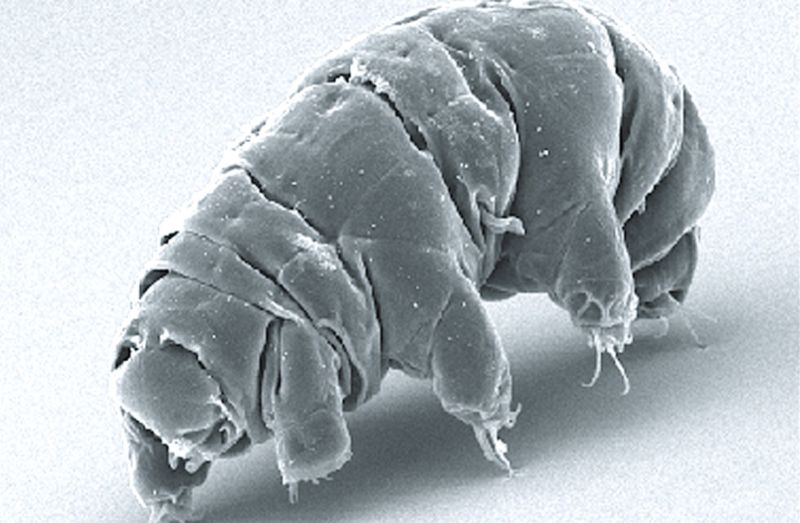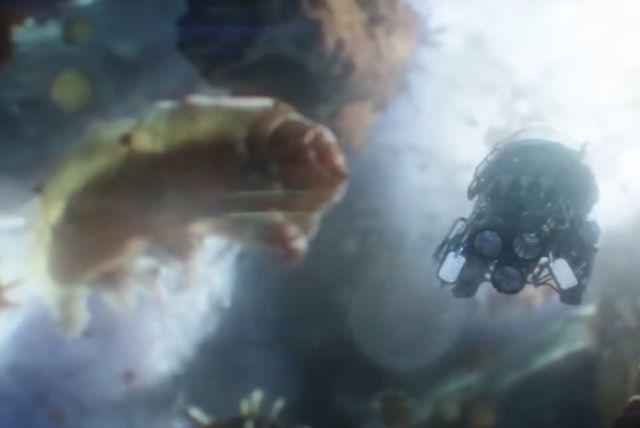https://arstechnica.com/?p=1547435

Tardigrades, more commonly known as “water bears,” are microscopic creatures capable of surviving the harshest extreme conditions. In fact, they were the first animal to survive in the vacuum of space in 2007. Now, it seems, they might be ready to colonize the Moon. BBC News reports that an Israeli spacecraft carrying the tiny creatures in a state of dehydration crash-landed on the Moon back in April. All they need is a bit of water to reanimate, and voila! We’d have a colony of lunar tardigrades.
First described by German zoologist Johann Goeze in 1773, they were dubbed tardigrada (“slow steppers” or “slow walkers”) four years later by Lazzaro Spallanzani, an Italian biologist. That’s because tardigrades tend to lumber along like a bear. Since they can survive almost anywhere, they can be found in lots of places: deep-sea trenches, salt and freshwater sediments, tropical rain forests, the Antarctic, mud volcanoes, sand dunes, beaches, and lichen and moss. (Another name for them is “moss piglets,” immortalized in a 2017 South Park episode where the gang teaches tardigrades to dance to Taylor Swift songs for science class.)
They’re not technically members of the extremophile class of organisms since they don’t so much thrive in extreme conditions as endure, but they can endure for an impressively long time. Their secret? They can suspend their metabolism, enabling them to go without food or water for 30 years or more, and they can survive dehydrated for at least five years. Once revived, they go on with their lives, even capable of reproducing to replenish their numbers.

Even though they are much too large in reality, tardigrades featured in the quantum realm in
Ant Man and the Wasp.
“Make sure you stay out of the tardigrade fields,” Janet Van Dyne cautions. “They’re cute, but they’ll eat you.”
The tardigrades aboard the SpaceIL Beresheet lunar lander were supplied by the Arch Mission Foundation, an organization dedicated to keeping backups of the flora and fauna of Earth by sending a “lunar library” into space, part of the group’s ongoing Billion Year Archive initiative. The library is a 30 million-page archive of human history and civilization, stored on a nanoscale device akin to a DVD—except it’s made of 25 layers of nickel disks just 40 microns thick. The archive purportedly can be read with an optical microscope or even a magnifying glass, and it contains thousands of books, DNA samples, and a few thousand water bears, among other treasures.
According to the organization’s website, “We intend to gradually pepper the solar system with records of our civilization…. The more locations that Arch Libraries are sent to, the greater the probability that at least one of them will survive to be discovered in the distant future. Long after the pyramids have turned to dust, and no matter what transpires on Earth, the Billion Year Archive will remain.”
The dehydrated tardigrade samples were in a state of suspended animation for their trip to the Moon and were encased in amber. But given how hardy the creatures can be, “We believe the chance of survival for the tardigrades are extremely high,” Arch Mission Foundation co-founder Nova Spivack told BBC News. Per Wired, “In the best-case scenario, Beresheet ejected the Arch Mission Foundation’s lunar library during impact, and it lies in one piece somewhere near the crash site.” Granted, it’s a long shot that water would magically appear (perhaps from thawed water ice) on the Moon in sufficient quantities to rehydrate any surviving tardigrades and allow them to thrive. But in principle, a colony of water bears is within the realm of possibility.
Even if they don’t survive, BBC News has a suggestion for Hollywood. “There’s definitely some great source material for a sci-fi/horror movie. Attack of the Moss Piglets from the Moon? We’d watch it.”
So would we.
via Ars Technica https://arstechnica.com
August 7, 2019 at 12:48PM
